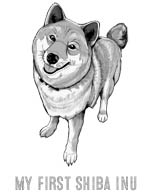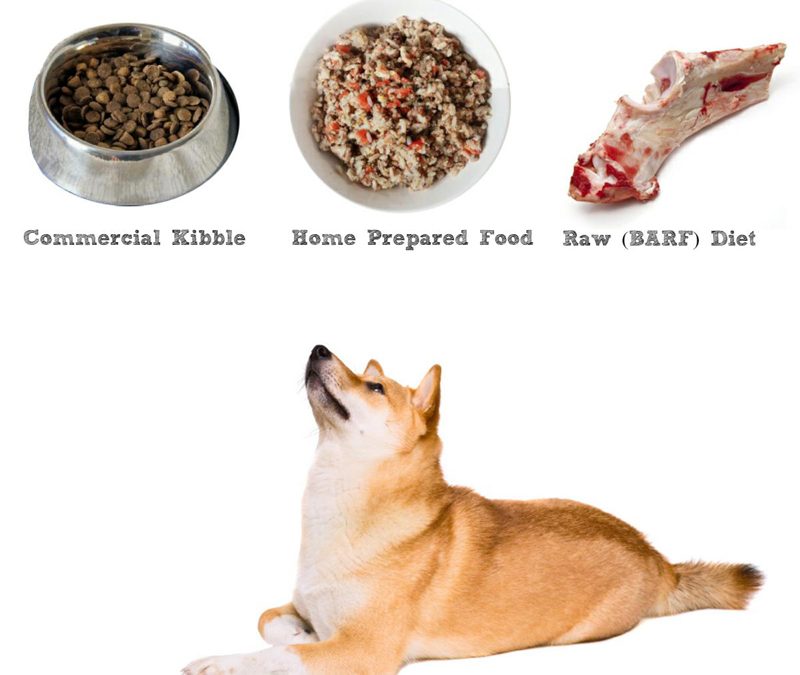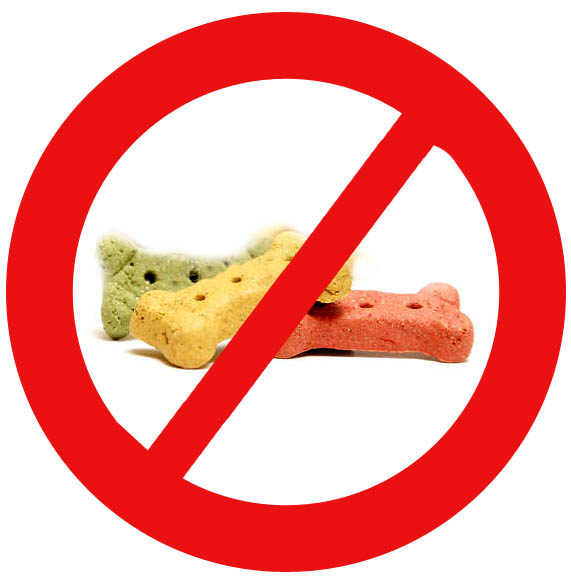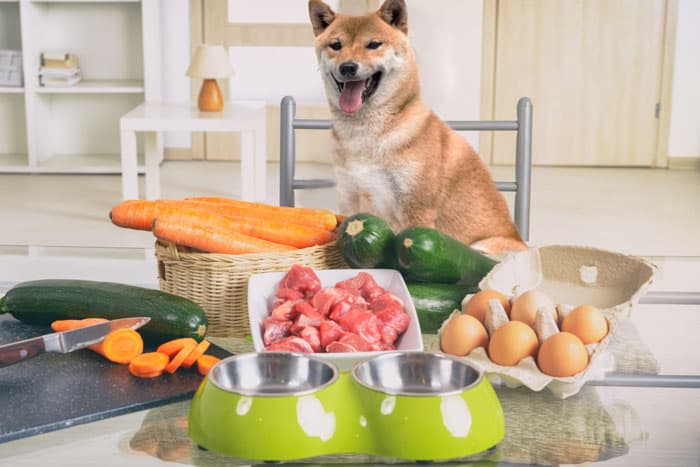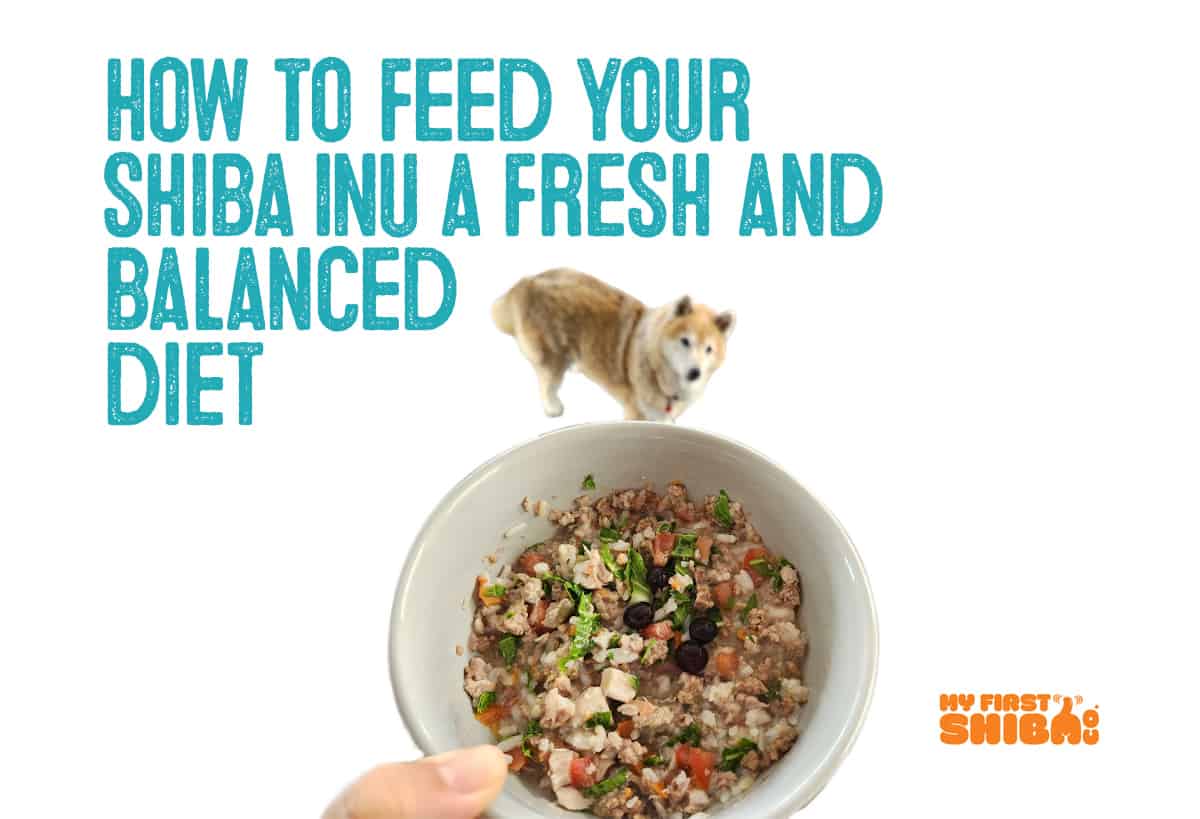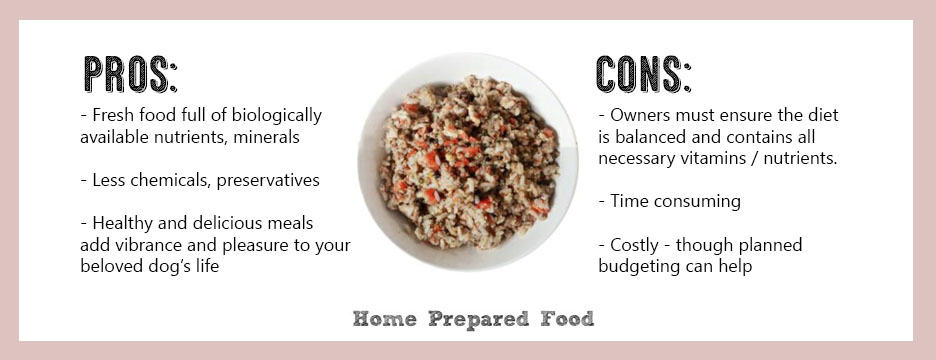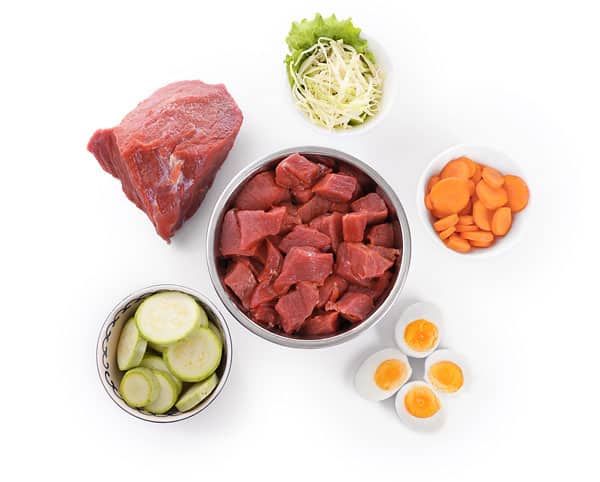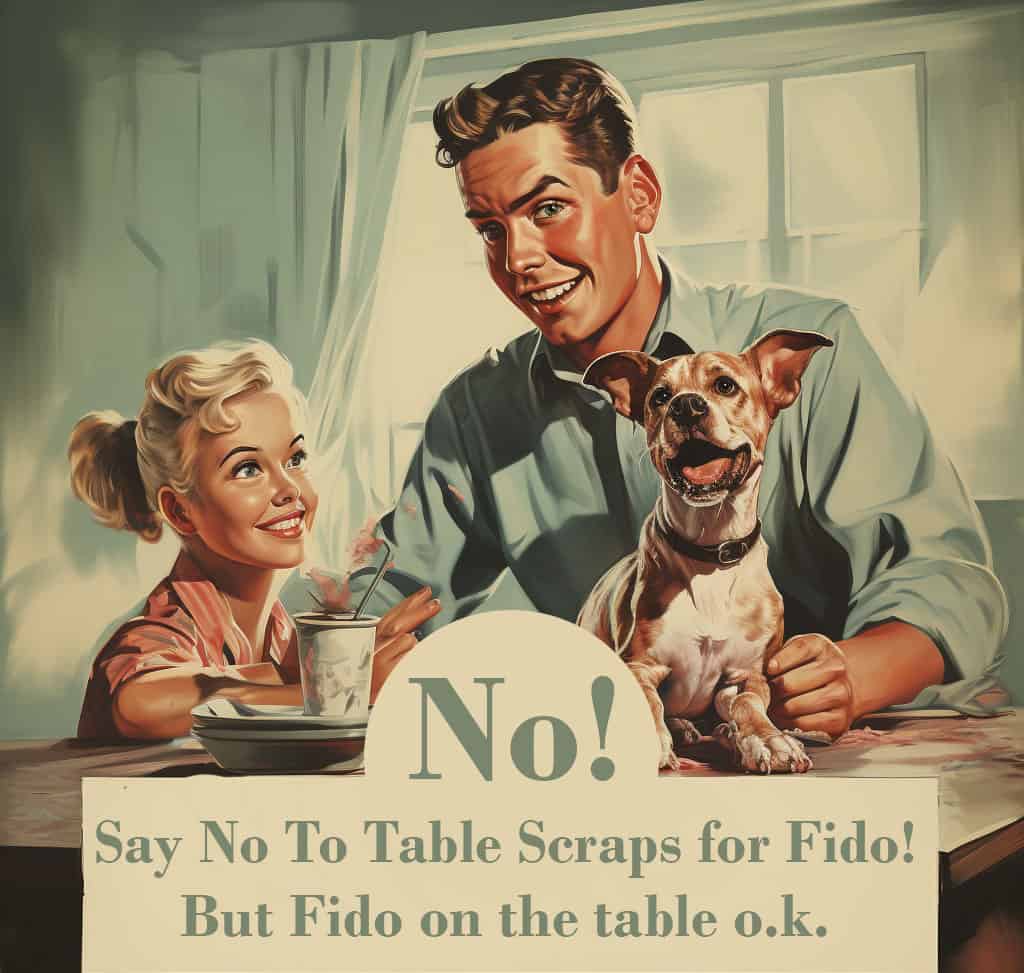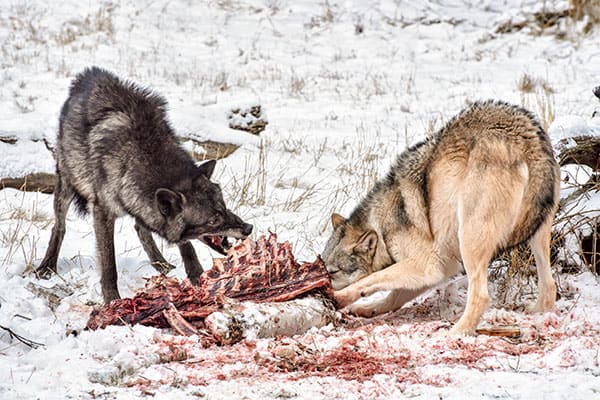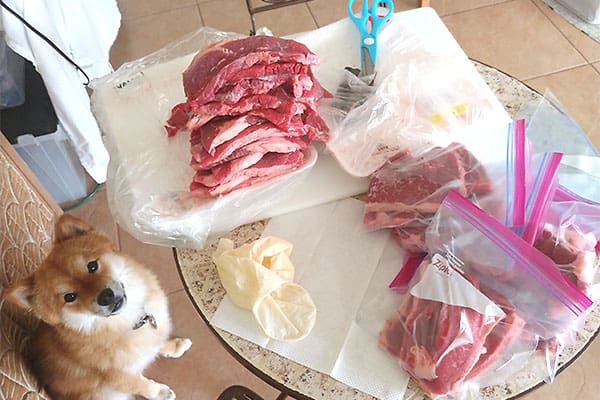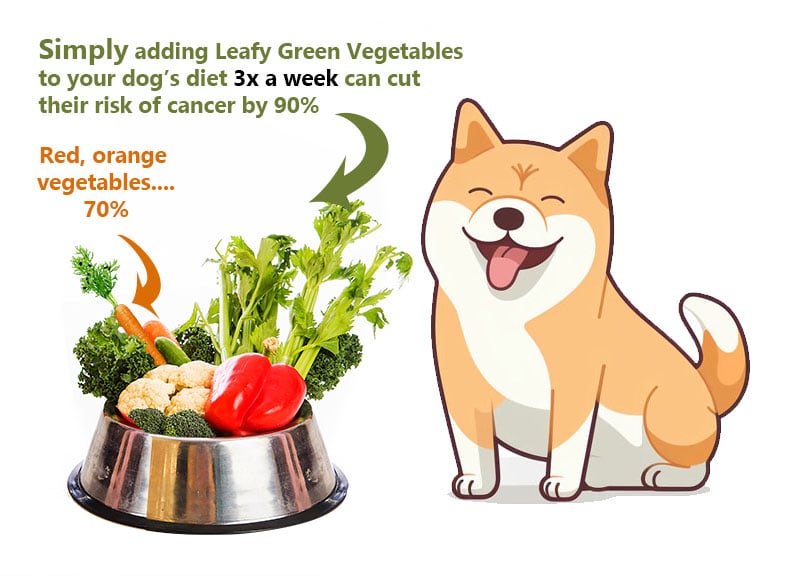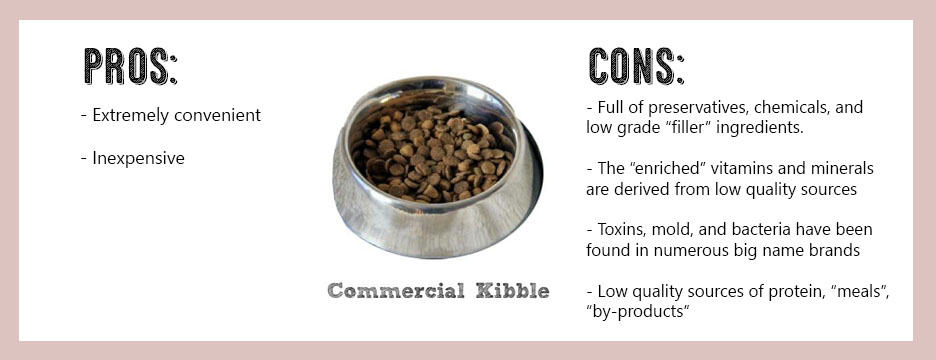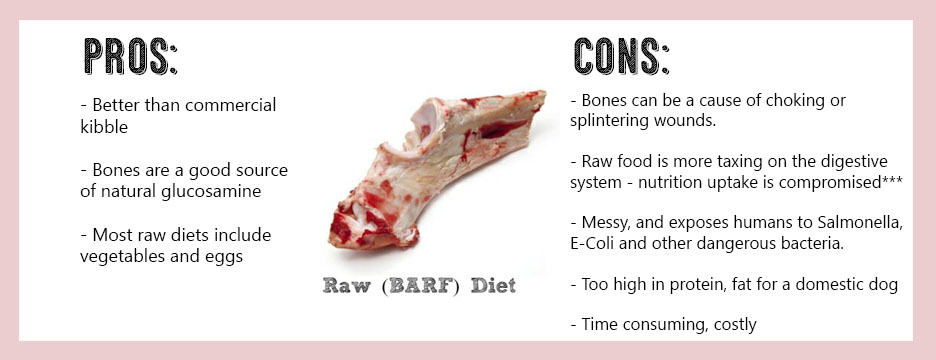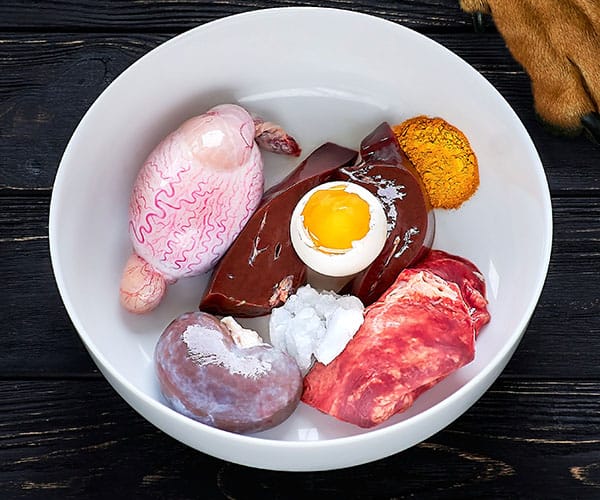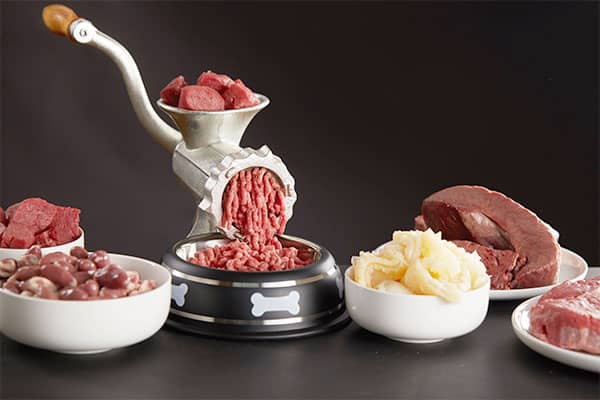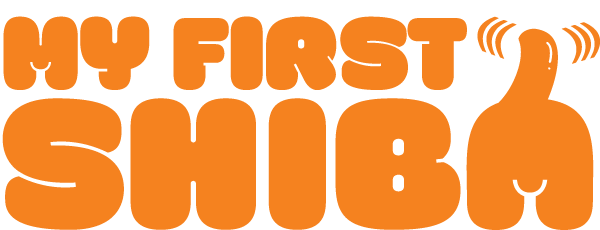On occasion, our posts contain affiliate links. However, we only recommend products that we truly believe in. For more information, visit my privacy policy page.
Phew, this website is a labor of love and largely a one-woman show so unless indicated, all articles written by J.Tsukamoto
What’s the best type of food to feed your Shiba Inu?
Kibble? Canned? Raw, Homecooked?
What brand? Where? How?
The most important thing to consider is the fact that dogs need to have a balanced diet.
The fresher, minimally processed foods will always be better than heavily processed foods filled with preservatives and low quality vitamins and minerals (almost always sourced in China).
During the past decade, much needed transparency has shown brightly on the dark side of the commercial dog food industry. (toxins, “rendered, mystery meat”, by-products, supplements from China, preservatives, etc….)
This prompted the dog food industry to go into “damage control overdrive”.
We’re now inundated with positive and rosy ads for “natural”, “healthy”, “real beef / chicken” , ” made with the finest ingredients” – you get the gist.
Check out this clip dug out from video archives of Hersh Pendell, a former AAFCO president fessing up to the fact that their kibble, made at that time likely contained euthanized pets!
It’s understandable that finding the right type of food would be daunting to pet owner.
How To Feed Your Shiba Inu The Best Nutrition Possible
If it’s universally accepted that humans should eat the freshest, least processed whole foods to lead a healthy life – why shouldn’t that apply to our pets?
Looking back at the evolutionary history of canines, do you see preserved, dry kibble being in their diet for any extended amount of time in their history?
Of course not.
Commercial, dry kibble was created in the not-to-distant past simply due to the shortage of metal tins due to the war.
When businesses learned that they could use left over by-products from their main human product line – and still bring in hefty profits – the commercial dry dog food industry was born.
How To Feed Your Shiba Inu The Best Nutrition Possible
We will explore the three most common methods of dog feeding and the pro’s and con’s of each method.
- Home Prepared Food
- Commercial Kibble
- Raw “Barf” Diet
Shiba Inu’s are an ancient Japanese dog breed that inhabited areas in Japan that were mountainous and landlocked.
Theoretically, their diets would have consisted of wild fowl, fish, small game, rice, and veggies.
Much research has been done on the health benefits of consuming fermented foods for humans – which could provide health benefits for dogs as well.
Japanese Shiba owners are often seen indulging their Shibas in Natto – fermented beans with an oh so pungent aroma.
Even today, a large portion of dog owners in Japan still feed fresh food either alone or with kibble.
Feeding Your Shiba Inu a Balanced, Fresh, Homemade Diet
After years of research and feeding trials, I mainly feed my Shibas a fresh, homemade, lightly-cooked diet.
Additionally, I also feed my Shibas raw, commercial fresh prepared, some brands of kibble, and occasionally freeze-dried.
Feeding fresh is by far the most nutritious and healthful way to feed your pet so long as you ensure that you’re providing a balanced meal with all the necessary vitamins and minerals.
It’s important to understand how to supplement your dog’s fresh meals with the appropriate types of vitamins and minerals.
My favorites are those found at Nature’s Farmacy.
However, I do my very best to create meals that naturally provide the needed vitamins and minerals versus relying on the synthetic options.
Fresh proteins, vegetables, fruits, and carbohydrates contain much more biologically available vitamins and minerals than extremely processed kibble.
More importantly, they don’t contain:
- Preservatives
- Chemicals
- Low Grade “Rendered” Protein
- Grain “Leftover” Ingredients
- Toxins
- Low Quality Added Vitamins / Minerals
But what about the saying, “You should never feed your dog table scraps”!? That propagandic statement was invented by the Pet Food Industry in 1960’s to boost slumping dog food sales.
Yes, it always points back to the money trail.
World Wide Web of “Misinformation”
You probably never heard of the term “nutritionism” before.
Nutritionism supporters who by far are mostly large food corporations, believe that scientists are capable of engineering a food that is superior to that of mother nature.
Basically asserting that the source of the food is irrelevant as long as the nutrition “numbers” add up.
This misguided and short sighted ideology is great for commercial food manufactures but misguiding for consumers.
Read more about nutritionism here.
What Dogs Ate In The Past
Dogs have been around for hundreds of thousands of years.
Commercial dog food?
Only about a hundred years or so….
Before commercial dog food was invented dogs enjoyed a varied fresh diet consisting of human grade food either from sharing with their human family or scavenging.
Though it can’t be definitely proven – yet – they likely lived longer and healthier lives as well.
The Commercial Dog Food Business – A Profit Driven Industry
Commercial dog food was created by large manufacturers out of sheer urgency and necessity.
They needed to find use for their “leftover” byproducts like corn / almond husks and animal byproduct parts.
The stuff that humans wouldn’t want to eat – but dogs, of course, can’t complain about.
The five biggest manufacturers of dog food in the U.S. are Nestle, P/G, Del-Monte, Colgate-Palmolive, and M&M/Mars.
“But the Vet told me that I should only feed my dog kibble.”
– Veterinarians spend little if any time studying dog feeding methods and much less the quality of the commercial dog food being offered to their patients.
However, they do receive much funding / sponsorship / incentives from these large pet food manufacturers.
A LOT.
This special relationship between veterinarians and dog food manufacturers begins during veterinary school and continues throughout the vet’s career.
This obvious conflict of interest rarely gets noticed and unknowing pet parents will rarely question their vet’s advice.
My long-haired Shiba Inu Puppah watching me pack the beef!
But There’s a Catch To Feeding Home Prepared Foods Safely
Veterinarians are indeed correct when they state that home prepared foods run the risk of being nutritionally deficient.
In this case, an unbalanced homecooked meal is actually worse than low quality kibble that is at least, balanced.
Therefore, when feeding this type of diet, it is important to provide a variety of foods to fulfill all of your dog’ daily nutritional needs.
And this rarely can be achieved without the addition of supplmental vitamins and minerals.
So while a home prepared diet is one of the absolute best way to feed your Shiba – it also takes the most time, research and money.
It’s just not something you can take on half-a$$#!
So while this is our favorite method of feeding, we recommend our readers who are new to feeding homemade to start with a commercially purchased fresh food (human grade) diet to first get your toes wet.
Quick Tip:
Adding dark leafy vegetables to your dog’s kibble can reduce cancer rates by as much as 90% according to recent scientific done done in Scotland.
Adding orange vegetables such as carrots to your dog’s diet can cut cancer rate by 70%!
But adding green vegetables to your dog’s kibble and actually getting your dog to eat may not be a simple task.
Commercial Fresh Human Grade Dog Food
Luckily for us, and our pooches, more and more companies our offering fresh, human grade dog meals that are properly balanced and vet approved.
While we did recommend Just Food For Dogs in the past – at this moment we no longer do so.
Instead we recommend trying fresh food from Open Farm, and Raised Right Dog food.
There’s tons of companies offering freshly made dog food delivered right to your door. Unfortunately because I live in Hawaii, I haven’t been able to try most of them.
Processed Commercial Dog Food – Kibble
Commercial dog food is manufactured by a small handful of “mega” corporations that use their human byproduct ingredients to produce their “dog food”.
They simply add cheaply sourced vitamins and minerals, spend millions of dollars on advertising, and voila they practically got the perfect business model.
Commercial dog food is ultra preserved food filled with preservatives, chemicals, and additives that allow shelf lives of 25 years or more for certain brands.
The high heat processing and preserving renders the food mostly “lifeless” with limited if any “alive” bioavailable antioxidants.
When choosing to feed your Shiba Inu commercial dog food, it’s imperative that you understand how to decipher dog food labels and research various brands before choosing.
There are so many grades and levels of dog food quality in this category. Mostly it goes from “pretty good” to “down right horrific”.
- Choose small companies that are dedicated to their craft and the animals they provide food for
- Look for a kibble that has meat as it’s first ingredient, not meat byproduct or “meal” (fish meal is o.k.)
- Stay away from kibble that has mostly “filler” material such as corn, wheat, soy
- Stay away from kibble that has artificial colorings and preservatives
- Avoid products with too much protein, as modern dogs do not have the same digestive systems as their wolf ancestors
- Stay away from Beneful or any Purina product. Period.
There are some really good dog food companies that actually care about dogs and take pride in the products they create.
It’s up to you to find the best choices for your dog by researching and experimenting.
Look out for clues of dog food intolerance such as stomach issues (vomiting, diarrhea, loud digestive noises) and allergic issues (rash, hotspots, hair pulling).
The very few kibble options we’d use are:
Also check out our dry food recommendations here.
Commercial, Processed Wet Dog Food
If you are feeding your Shiba Inu only dry commercial kibble, it’d be beneficial to supplement the diet with either fresh human food or wet dog food.
Dry kibble can be dehydrating so adding a wet food and ensuring your dog drinks enough water is important.
Fresh and Raw Diet For Shiba Inu
The raw food diet involves feeding your dog raw meats, bones, organs.
A raw diet can also include vegetables, eggs, fruits and vitamin supplements.
This method of dog feeding is probably one of the most debated and consists of passionate supporters as well as strong criticism from opponents.
A Quite Logical But Not Fully Substantiated Theory
One of theories for feeding raw is that it’s biologically and species appropriate because dogs are descendants of wolves.
However this doesn’t take in account the fact that dogs were domesticated thousands of years ago. Their dietary needs have changed and adapted as well.
Proponents also claim that bone chewing is good for cleaning teeth. However opponents say that brushing a dog’s teeth is more advantageous and easy to maintain.
The Canine Version of “Raw Foodists”
Proponents also claim that uncooked food retains most of it’s nutrients. This reminds me of the human version of the “raw” movement. Small chuckle.
Raw feeding can seem intimidating to the uninitiated
What about the fact that humans brains grew exponentially larger after the development of fire?
Does this apply to our canine friends? Maybe, maybe not.
Regardless, the nutrition loss from light cooking is negligible at most.
Not The Best Choice For Apartment / Condo Living
Handling raw poultry is not really fun for us humans and things can get yucky.
Yes, there’s a risk for exposure to e.coli and salmonella that may not pose a threat to canines but could possibly be risky for those with compromised immune systems.
Yet if necessary, I’d choose this method over low-quality commercial dog food kibble any day of the week.
Deciding What To Feed Your Shiba Inu
In the end it’s up to you to choose the best form of feeding for your Shiba Inu. You must balance a variety of factors including your budget, your time, and your beliefs.
You also need to consider how your Shiba Inu tolerates the food to ensure that you have a happy, healthy, and thriving Shiba Inu for many years to come.
We always recommend to feed as FRESH as possible.
The less preserved. The less processed. The better.
